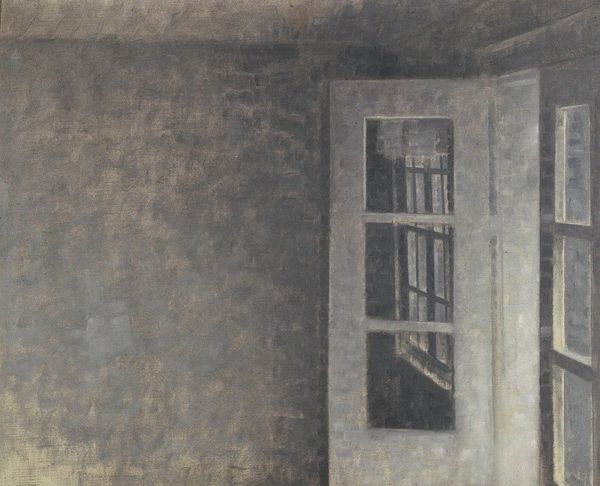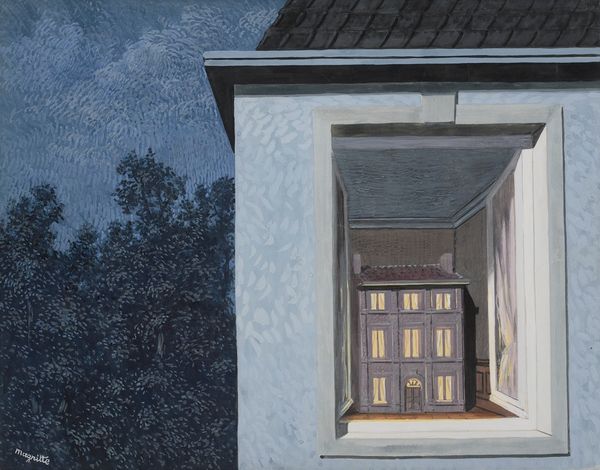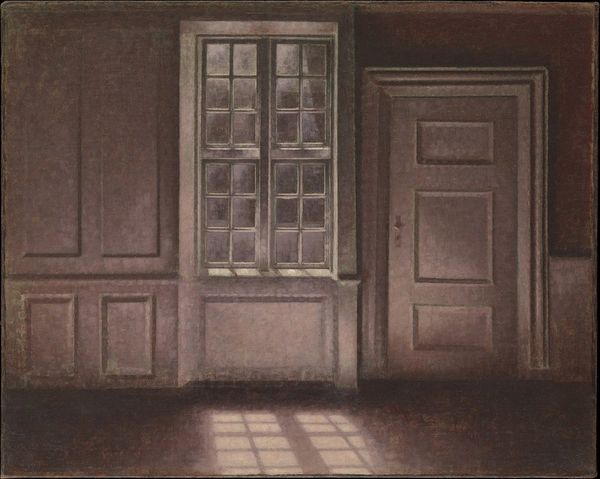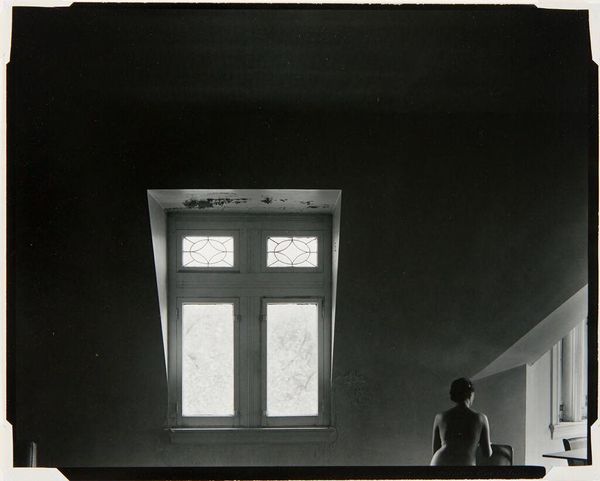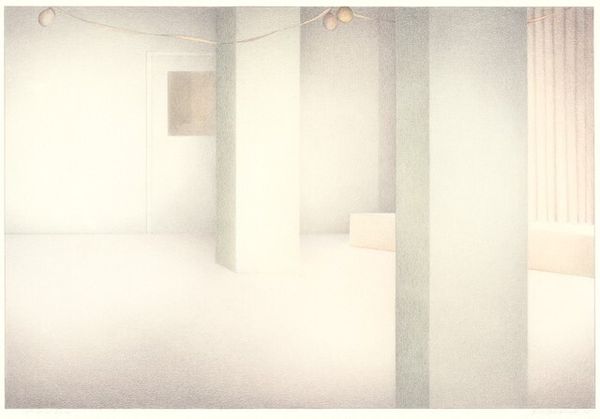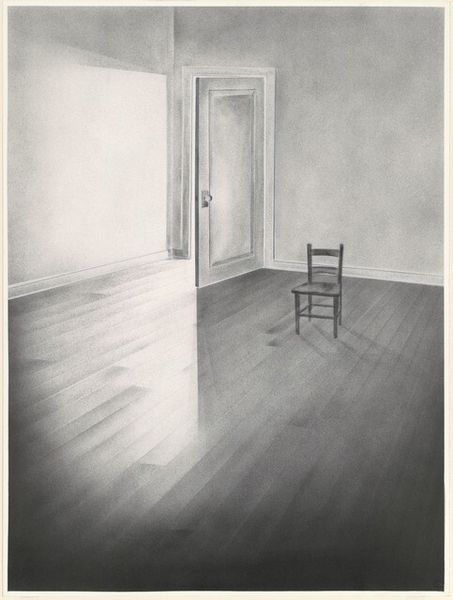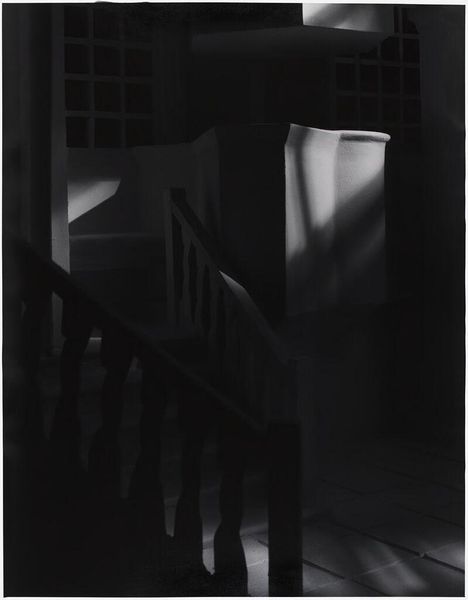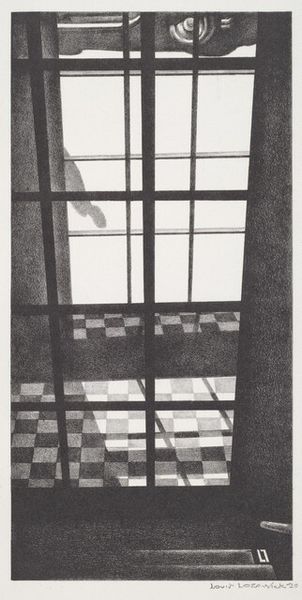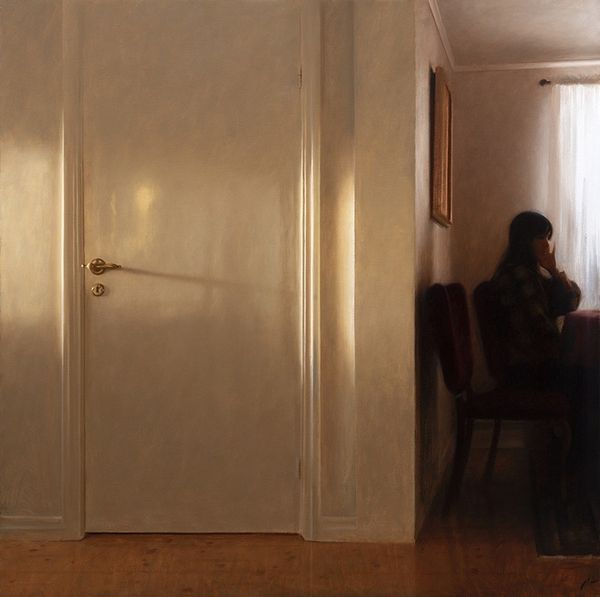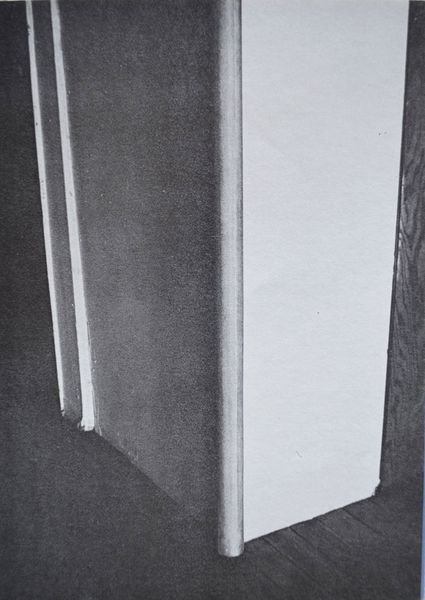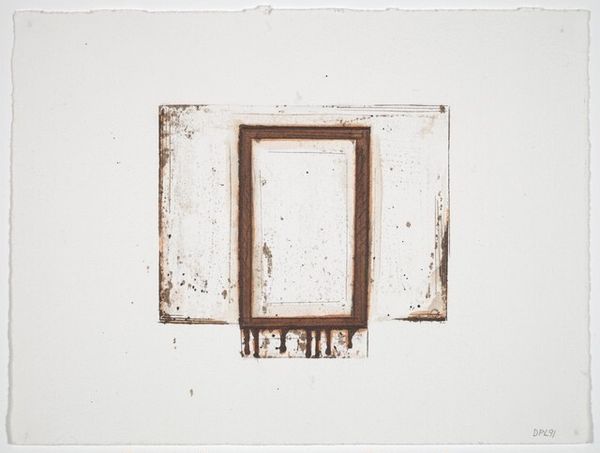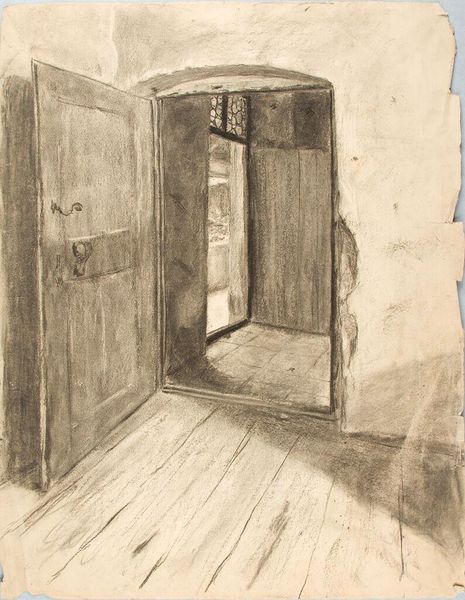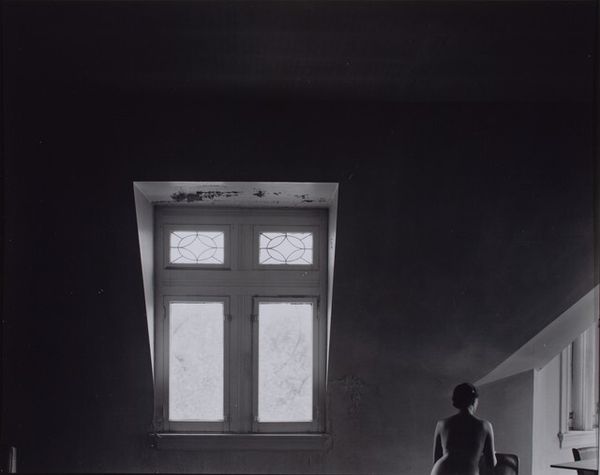
drawing, paper, pencil
#
drawing
#
landscape
#
paper
#
pencil
#
watercolor
#
realism
Dimensions: image: 74.93 × 100.17 cm (29 1/2 × 39 7/16 in.) sheet: 76.52 × 101.76 cm (30 1/8 × 40 1/16 in.)
Copyright: National Gallery of Art: CC0 1.0
Curator: Well, this pencil drawing from 1975 by Ed McGowin certainly has an interesting atmosphere. A room corner, a window... there's something almost ghostly about it. Editor: Ghostly is the word. The muted tones create a real sense of quiet, a sort of domestic unease. The surface is paper, but that texture just looks like the sort of material, a domestic quietude just on the verge of discomfort. I find it hard to believe he used pencil! I would’ve placed my bets on watercolor! Curator: It speaks to McGowin's mastery of the medium, doesn't it? Consider how a simple pencil on paper creates such depth and light. It also really calls attention to the artist's labor, all those minute pencil strokes adding up to the bigger picture. We should really contextualize this within art production practices, especially at a time when labor in artmaking was itself a subject for critical scrutiny. Editor: That's a great point. Looking at this through the lens of labor brings a whole new dimension. Beyond technique, there’s an almost melancholic feeling here, though. The lone window, the empty room... what does this say about interior spaces at that time, and about privacy in domestic settings? It makes me think of how the social role of the house changed, especially after 1968, when there were big cultural shifts regarding the role of public and private places. The shadow is pretty sinister. Curator: Precisely. Shadows have always served as metaphors, even within interior design, where placement became a social tool, particularly with windows such as the ones shown in McGowin's artwork. We need to also think of the market for drawing – drawings frequently became stepping stones towards the development of larger paintings or even sculpture, and for drawing in itself to become collectible involved shifting the art world itself. Editor: So much to consider with such a seemingly simple image. It is a useful reminder that how artwork such as these are conceived, produced, circulated and commercialized affects our impression of the material composition within. I think that many in our audience will hopefully start noticing this from now on, and with more works as well. Curator: It also underscores the complex dance between the artwork, the artist, and the cultural environment that shapes how the art piece gets shown. Food for thought for sure.
Comments
No comments
Be the first to comment and join the conversation on the ultimate creative platform.
